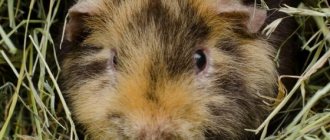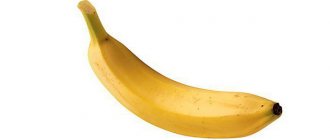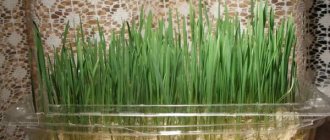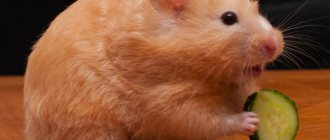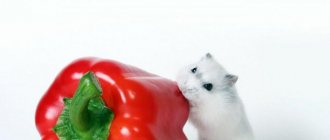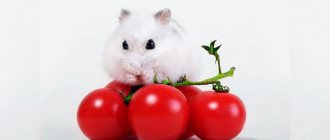Wild field hamsters in their natural habitat are omnivores; they feed on almost any plant food that comes their way. Domestic hamsters living with people do not have this opportunity. Their diet completely depends on the owner, who often offers them what he eats himself, for example, all kinds of fruits and berries. The vitamins and various microelements contained in these fruits are undoubtedly beneficial. But is it possible to pamper a hamster with them, and won’t this cause irreparable harm?
Can hamsters eat fruit?
In addition to a large supply of vitamins, fruits contain fiber, which plays an extremely important role in digestion. However, their high sugar content makes them potentially dangerous for diabetic rodents. Not all fruits are healthy and recommended for pet hamsters; some exotic fruits are strictly contraindicated.
Banana and banana chips
Bananas can be introduced into the diet of hamsters, but rather carefully, since they are very high in calories and contain a lot of sugar. This delicacy can be given no more than 1-2 times a week, and a single serving should not exceed 5-6 g (a quarter of a teaspoon). Obviously overripe and especially rotten fruits are not suitable. It is better to give preference to unripe and even slightly greenish fruits (they contain less sugar).
Overeating bananas is dangerous not only for the development of diabetes, but also for the possibility of obesity. The heart suffers from increased stress due to weight gain, and individual allergic reactions to bananas are not excluded. Sticky fruit pieces can clog your hamster's airways, sticking in the throat and other cavities of the digestive tract, causing breathing problems, choking and even death. Dry banana chips are less dangerous in this regard, but they are even sweeter and higher in calories, so you can’t give them too much. It is recommended to prepare chips yourself, since purchased products contain many different additives that are far from safe for small rodents.
It is better to avoid feeding banana skins to hamsters altogether, since the fruit is treated with chemical compounds for better preservation during transportation. These substances are extremely dangerous for all animals and can cause severe poisoning.
However, one cannot fail to note the benefits of banana; it contains the following necessary substances:
- iron - maintains hemoglobin at the proper level, restoring strength and relieving fatigue;
- potassium and magnesium - necessary for the normal functioning of the cardiovascular system, as well as the musculoskeletal system;
- phosphorus - strengthens bone and tooth tissue.
Apple and pear
Apples in moderation (no more than once a day, 10-15 g) are very beneficial for hamsters. This low-calorie fruit contains no cholesterol and has a positive effect on the body:
- strengthens the immune system, as it contains vitamins (groups B, C);
- supports the normal functioning of the cardiovascular system thanks to potassium;
- prevents cancer by being a source of antioxidants;
- improves blood composition, because it is rich in microelements (iron, phosphorus, copper, etc.).
Hamsters should not be given too many apples, as this can cause problems with the digestive system (increased gas production) and increase sugar levels. Dried pieces can be safely added to prepared food. Fresh fruit must first be washed and removed from skin and seeds. If it is bought in a store, it is better to soak it in water for 2-3 hours to remove harmful substances. Apples grown on your own plot (without the use of chemicals or pesticides) can be given with the peel. It is preferable to choose varieties with a sweet and sour taste.
Hamsters react to pears in different ways: some individuals eat it with pleasure without any negative consequences, while others feel bad. Therefore, the decision to introduce this product into the diet is made purely individually. Eating pear has the following effects:
- has a diuretic effect;
- prevents the formation of salt deposits;
- strengthens vascular walls;
- has an anti-inflammatory effect;
- helps with constipation.
The negative impact of a hamster eating a fresh fruit is irritation of the gastric mucosa, increased formation of gases, as well as possible allergic manifestations. Peel the fruit, remove the seeds, cut into small pieces of 10-12 g and give one twice a week. You can feed dried pear pieces without fear for the hamster’s health, but not more than once every couple of weeks (1-2 pieces).
Watermelon and melon
Melon crops, such as watermelon and melon, are absolutely contraindicated for hamsters. As a result of eating fruits containing a huge amount of liquid, they are guaranteed severe diarrhea. Tender fruit pulp, even if left in the feeder for a short time, deteriorates quite quickly, in which case poisoning is inevitable.
The huge amount of fertilizers and dangerous pesticides used on melons and contained in watermelons and melons is deadly for small rodents.
Apricot, peach and nectarine
Stone fruit crops (plum, cherry plum and apricot) grown in local climatic conditions can be grown for hamsters, but you just need to remove the seeds from them. Spoiled or stale fruits should not be given, as the juicy pulp quickly rots and becomes covered with dangerous fungi and bacteria. The entry of pathogens into the body is fraught with poisoning and intestinal upset.
Sweeter peach and nectarine are allowed in very small quantities (a piece of 3-4 g) and no more than 2-3 times a month strictly as an exclusive delicacy. Sugary fruits eaten in excess by a hamster can lead to weight gain and diabetes. Before consumption, all fruits should be thoroughly washed; dirty surfaces contain not only pathogens, but also worm eggs.
Vegetables for your hamster
Fresh vegetables are very welcome in the rodent's diet. As a rule, they are given every other day (less often for Campbell hamsters). It is a good source of organic acids, pectin, and other nutrients. They also supply the body with water, which is important for every living creature. Popular foods for hamsters are:
- beets - offered fresh and boiled;
- cucumber (only in season) – dietary, even Campbells are allowed once every 3 days;
- zucchini – useful for water balance, sometimes steamed;
- sweet peppers – without seeds, the peel is removed from the store-bought product;
- carrots - given raw or boiled, Campbells are allowed only tops;
- squash is a dietary vegetable, suitable for all breeds;
- pumpkin is low in calories and very healthy when eaten fresh.
There is a lot of other information about what vegetables can be given to hamsters. So, occasionally you are allowed to pamper your small pet with a piece of radish, turnip, celery, or cauliflower. Boiled without salt or fresh corn is useful; in moderation it is recommended for everyone except the Campbells. Peas and beans are sources of protein.
Citrus fruits (oranges, tangerines and lemons)
Absolutely any citrus fruits (tangerine, lemon, lime, orange, grapefruit, pomelo) cannot be given to hamsters. These fruits are harmful for the following reasons:
- a high content of vitamin C can provoke hypervitaminosis;
- acids from citrus fruits corrode tooth enamel and irritate the mucous membranes of the esophagus, stomach and intestines;
- cause allergies.
It must be remembered that both the pulp of citrus fruits and their peel are harmful. Even intensive washing is not able to wash away the chemicals used for preservation from imported fruits.
Is it possible to feed hedgehogs milk?
These babies do not have the enzyme in their body that breaks down lactose. If you offer a hedgehog cow's milk, he will, of course, drink it, but will soon begin to suffer from indigestion. Sometimes hedgehogs experience food poisoning and diarrhea.
Moreover, cow's milk contains antibodies that can simply destroy the body of a small animal. So says Moscow Zoo zoologist Alexey Turovsky. However, the specialist notes that this does not apply to goat or dog milk.
The zoologist explains the killing effect of cow's milk on hedgehogs by the fact that in natural habitats such food is completely excluded for them. “In order not to make the animal worse, you should not feed it at all,” Turovsky says about hedgehogs. The zoologist claims that any wild animal, if it is healthy, is able to feed itself.
“The generally accepted opinion that hedgehogs are hungry and want to eat is a misconception,” notes the zoologist. In summer, hedgehogs really have no problems with food. However, in early spring, these animals still need food.
In this case, hedgehogs can be fed with available food: cat or dog food, raw eggs, boiled sausage, tomatoes, lettuce, apples, carrots, pears. If possible, the hedgehog should be given fresh, cool water in a bowl after feeding.
Probably, each of us at least once in our lives, either in the village, or on TV, saw a cute, fluffy, prickly baby hedgehog drinking milk from a saucer. This composition cannot help but touch you.
However, if you decide to give your children joy and have such a cute pet at home, then you should know everything about the diet of these animals, including, for example, whether hedgehogs can drink milk.
Scientific information about hedgehogs breaks all stereotypes about these animals. So, from an early age we drew hedgehogs with an apple, pear or mushroom on their needle-like back. Therefore, it is surprising to learn that hedgehogs do not actually eat mushrooms and apples; these animals are carnivores by nature and prefer to eat meat and insects.
Living in the wild, the hedgehog happily eats snails, caterpillars, various beetles, and earthworms.
Therefore, when a hedgehog moves into the house, the owners need to make sure that its usual diet changes only on a minor scale. If it is not possible to supply the hedgehog with cockroaches, crickets or (what a nightmare) mice, then the hedgehog should be treated to fresh fish, boiled liver, raw and boiled meat. From this food, which is familiar to people, a hedgehog is also able to take the useful microelements and substances necessary for its existence.
Also, hedgehogs will not turn their nose up at a carrot or an apple. But the most favorite treat for a hedgehog is milk. On the Internet, among the tips for feeding a hedgehog at home, it is recommended to treat the prickly one with bread soaked in milk.
But can hedgehogs actually drink milk or should they be fed milk-soaked bread?
Most zoologists answer this question that hedgehogs can drink milk, but only goat or sheep milk. Cow's milk should not be given to hedgehogs. The thing is that cow's milk contains antibodies that kill hedgehogs. In addition, hedgehogs are deprived of the ability to break down lactose; they do not have a special enzyme for this. Drinking cow's milk can not only cause an upset stomach in a hedgehog, but also lead to the death of the animal.
Even though hedgehogs, like many other animals, are milk drinkers for its taste and smell, they should not be given milk because in the wild milk is not a component of their diet.
Thus, so that your pet does not get sick and lives happily ever after, try to feed it food familiar to its body from meat and insects and indulge it less in sweets, which include cow’s milk.
Dried fruits
Hamsters can occasionally be pampered with dried fruits (dried apricots, raisins, fruit chips). But you can’t get carried away with them, since the sugar content in them is high. In addition to raisins, Syrian hamsters are given a little dried apricots. For miniature jungarians, who are more prone to obesity, it is better to offer less sweet dried pieces of apples or bananas. But prunes are contraindicated for hamsters; it is better to avoid them completely.
Banana chips are already included in some ready-made feed mixtures.
Benefit
Peaches are a fantastically tasty and healthy fruit! They benefit people and hamsters! If you feed this fruit correctly and in the right quantity, your hamster will receive not only a good mood, but also health benefits.
Here's what peaches and nectarines are rich in:
- Antioxidants – These protect your hamster from the risks of aging and cancer.
- Vitamin A is good for your hamster's health.
- Vitamin B – this will give your hamster a lot of energy.
- Vitamin C – has a positive effect on overall health.
- Magnesium – Great for lowering your hamster's blood pressure.
What berries can you give?
Juicy seasonal berries should undoubtedly be present in a hamster's diet, because they are a rich source of a wide range of vitamins and minerals. Eating them helps keep the immune system in order; you are allowed to treat:
- wild forest rowan;
- blackberries;
- strawberries;
- blueberries;
- cranberries;
- strawberries;
- white and red currants.
In very limited quantities, the hamster is occasionally given the following berries:
- lingonberries;
- blueberries;
- chokeberry;
- ripe unsweetened grapes (seedless);
- pitted cherries and cherries;
- raspberries;
- gooseberry;
- black currants.
Vintage basket
Here we are dealing with a representative design in the style of modern rural fashion. Best suited for lovers of cycling or short distance travel on scooters. The basket itself is woven from flexible willow and equipped with an openwork wire lid, which prevents the cat from wanting to get out while moving. At the first glance at such a carrier, one is reminded of idyllic pictures from centuries ago, when food from the market was transported in a similar way on bicycles. The entire structure is conveniently attached to the steering wheel using leather straps and does not require much time for preparation.
The advantage of the option under consideration is, of course, its original design and originality. The downside is limited functionality. Although, if desired, the basket can be used for its intended purpose.
Price – 1,128 – 1,708 rubles.
Rules for feeding at home
In the wild, the daily menu of hamsters is determined by their habitat. To ensure that your pet does not experience a shortage of essential food in captivity, you need to carefully think through the diet and maintain a balanced level of macro- and microelements in the animal’s body.
Mode
Veterinarians recommend feeding your hamster 2 times a day - morning and evening. It is better to give fresh food first so that the rodent does not start hiding it in the pantry. The bulk of the food is served in the evening. Hamsters are crepuscular rodents that prefer a nocturnal lifestyle.
To prevent your pet from overeating or experiencing food shortages, you need to adhere to the established feeding regimen.
Quantity
Depending on the age and size of the pet, different amounts of food are required. The hamster consumes quite a lot of food, and the daily norm is 80-100% of body weight. Appetite is determined by breed characteristics, microclimate and individual preferences of the individual.
The hamster considers food not only as part of the daily menu, but also as a strategic reserve. Therefore, uneaten food is put aside by the rodent in case of starvation. This leads to the appearance of an unpleasant odor and the development of pathogenic organisms in spoiled products. To prevent such troubles, you should remove the remains in a timely manner. Instead, you can put a few seeds in your pet's storage.

